For years, you’ve probably heard people say that you should be using video in your marketing. It makes sense. After all, YouTube is the second largest search engine after Google. If you don’t have a YouTube strategy, you’re missing out on a ton of traffic and a massive opportunity to promote your brand. While creating video content is cheaper and easier than ever, it can still be intimidating if you’re unfamiliar with the medium or if you’re a perfectionist like me. If you’re ready to unlock the power of video marketing, keep reading because this episode is going to be a masterclass from a true expert. Sunny Lenarduzzi has been called a master marketer by Entrepreneur.com. She’s helped brands like Hootsuite develop winning social media and video strategies and she runs her highly successful YouTube channel, which has amassed over 260,000 followers and has been praised by Forbes. From scripting to why you need a loyal community of fans, Sunny will be revealing tried and tested techniques to help you leverage video to its maximum potential.
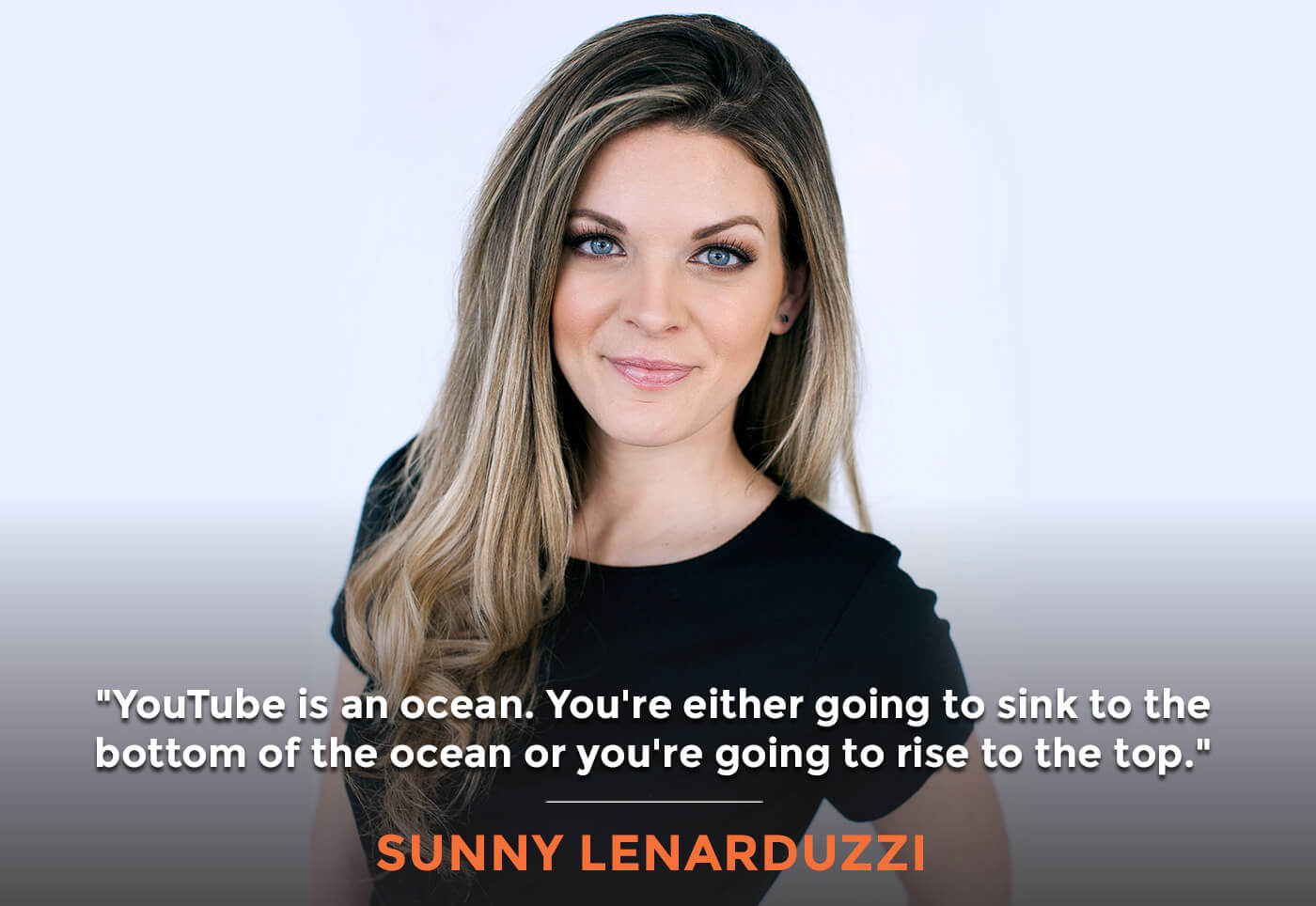
Transcript
Sunny, it’s so great to have you.
Thanks for having me. I’m happy to be here.
I was impressed watching you speak at the Traffic & Conversion Summit. You gave a lot of value bombs. Let’s start with what is your signature talk. You’re talking about YouTube all the time, obviously, but what’s the talk that is your signature talk about YouTube?
I think my signature talk I would say is around building an evergreen sales machine because that’s how I look at YouTube. I look at it as this machine that builds your authority, your impact, your income on autopilot. I say that because it’s basically what’s happened for me since I started. It happened quickly when I started putting videos out where I was getting approached for big speaking engagements. I have spoken on the biggest stages in my industry and building my business that I had never dreamed of before.
Congratulations on that. That’s awesome. What would be an example of a big speaking gig that you got because of your YouTube presence?
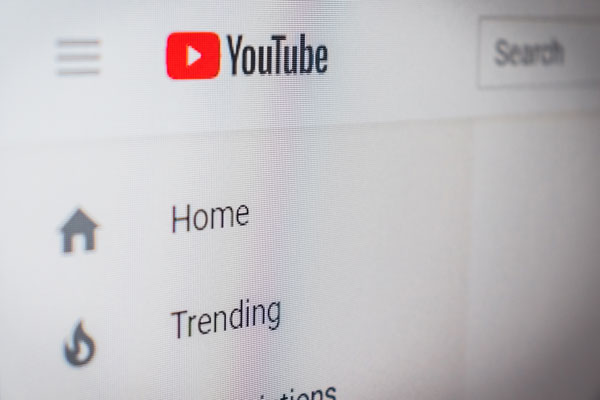
The very first one I got actually was at NATO headquarters in Brussels. I was approached on LinkedIn in a private message by the head of social media for NATO. He said, “I stumbled across one of your videos on YouTube,” and I had only been putting videos out for about a month at that point. He was like, “You did a great job explaining the concept and I think it would be great if you come to speak at our conference,” where I was speaking to a roomful of people who were from NASA, the CIA, the FBI, the UN, and NATO. It was such a crazy experience. That was basically my first major speaking engagement. I was in Brussels. They flew me out there to speak to these major organizations and I’m just this girl from Vancouver who happened to put my knowledge out there online.
I hope you were able to use their logos on your speaking page as examples of your client-speaking gigs.
Totally.
There’s one particular video that made you internet famous. You hit millions of views with that, but you didn’t get the title quite right and so forth. Hindsight’s 20/20 and you didn’t know that was going to blow up and go viral. Could you share a little bit around that story of what video that was and what it was about?
I’ve had a couple like that at this point where I didn’t realize the power of what it was that I was sharing. Basically, it was one of the first videos that I posted and I had been making random videos here and there and vlogs for a couple of years. I came from a TV background and I was like, “It’s fun to make videos. I had done it my whole life. I’m just going to keep playing around with this.” That’s what I was doing. I decided one day on a whim, all my clients were asking me the same questions over and over again and if you are an entrepreneur, you know that your clients and customers oftentimes have frequently asked questions. That’s the first clue of great content to make. At the time, Periscope had just launched the live streaming app and I was like, “Everyone is asking me how to use this thing to build your business, so I’m going to make a video on it.” That’s what I did.
YouTube is an ocean. You're either going to sink to the bottom of the ocean or you're going to rise to the top. Share on XI decided to make a video on how to use Periscope in live streaming to build your business. I posted it, I sent it out to my clients. My channel wasn’t branded. I barely had any subscribers. I had random old family videos and a couple of random vlogs that have no views on them. I didn’t think anything of it. I sent it to my clients, which is about ten people at the time and I woke up the next day and there are a couple of thousand views. I was shocked obviously but it also was a big light bulb moment of, “How do these people come across this video? How did they find me?”
It was the realization that this is a powerful search engine and I can be using it in a great way to build my business. Let’s treat this as an experiment. That video now has over 100,000 views on it. I had another video a couple of weeks later that I posted that has over a million views on it now. The lighting wasn’t perfect, the sound wasn’t perfect. I barely put any effort into what I looked like that day. Yet, it still took off because the value of what I was saying was more valuable than the production. That’s the thing with YouTube. It is called YouTube for a reason. People don’t care if it’s a perfectly produced TV show. They care if they’re getting some value out of it whether it’s entertainment, inspiration or education.
When you post something these days, I’m assuming that you think this might go viral because you never know. You’re putting the time into getting the title rights and the hashtags and tags which are separate from each other, all that stuff because you never know when you’re going to go viral.
The thing for me is that’s never been the intention to go viral. For me, I define viral in a very different way than most people do because I do treat YouTube as a business. I think that’s been how I’ve always approached it. Once I figured out the power of it, I was like, “This is a business and I need to treat it as a business and it’s going to build my business.” All of the content that I create is highly strategic and highly targeted because I don’t care to reach millions of people who don’t care about my content. I care to reach the people who are very invested in my content and are invested in growing their business and their brands and are eventually going to become customers of mine. It’s been a key way that I’ve built my business.
For me, VIRAL, the acronym that I use for it is Valuable Information Intel, so using your own unique intel to create solid content and be the best in that niche. Relevant to your target audience. Authoritative, showing it that you’re the expert and then Leveraging it for your business. If you’re not sending people to your website or to an email list or to a Facebook group where you can further capture them and nurture the relationship, then you’re not doing your job and you’re not going to be able to further the relationship with them.
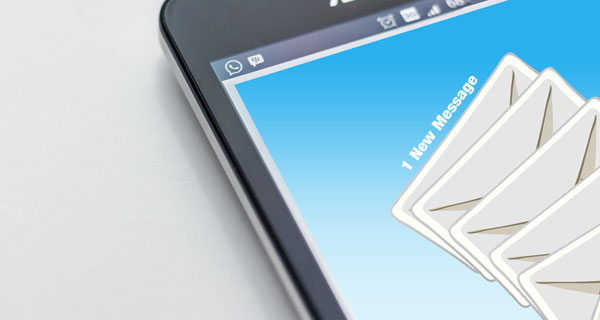
I love that VIRAL is Valuable Intel, Relevant, Authoritative and Leverage. You can get a big outcome for example, a NATO speaking gig from a thousand views or even hundreds of views. It’s about the targeting and the positioning of it and not so much about the wide reach. What would be the things that are the most important elements to get the best outcome from a video? Is it the title? Is it the thumbnail? Is it the hashtags? What’s the secret sauce there?
It’s truly all of it combined. We break down the entire process to get the best results. In my program, YouTube for Bosses, we have a consultancy called The Authority Accelerator. We break it into four phases. Research is the most vital part of it. You need to research what content your audience actually cares about and your ICA actually cares about and formulate the titles based off of that and the tags based off of that. Research is the longest portion of it and then it’s the structure part. That’s your scripting and your editing. How you script and edit your video is vital to your success because YouTube is a retention-based platform, as most of them are now. You need to make sure that people are watching the whole video in order for your video to actually get seen and to continue to bring in evergreen leads and sales. Optimization is step three. Making sure all the backend things are done correctly and then distribution. It’s not just relying on YouTube to generate views and subscribers, but also pushing it out to your pre-existing audience off of YouTube as well. I think all of those things combined are what fuel the machine to continue to bring in evergreen results for you moving forward.
Do you have an example from a client where you could walk us through this four-step process and some results that the client was able to achieve?
I have one client who started with us from scratch and I often get asked, “Is it too late to start on YouTube?” The answer is no. One of the biggest things that you need to do is figure out how to fill the holes. My client is actually a doctor, Dr. Ruben, and he wanted to figure out how to grow from scratch. We basically formulated his content strategy with them. He’s in our Authority Accelerator Program and his first three videos are all ranked on the number one page of YouTube and on Google. He’s bringing in a solid amount of views and he’s going to be at 100 subscribers pretty quickly from zero. That might not seem like a lot to you, but also following the same formula helped clients go from zero to 100,000 in less than ten months and we call that our 100k Club because we’ve now had multiple clients do that. It’s basically finding the gaps where you can have a high search volume, low competition and a gap in views and velocity.
For Dr. Ruben, he created a video on holistic stress management and basically, there was a bunch of videos ranking. The number one video is ranked by TED, which is a very authoritative channel, but it was an old piece of content. The top-ranking videos were all quite old. The search volume for that exact keyword was 110 searches per month, which is perfect for a brand-new channel. You want to have between 100 and 1,000 searches per month. The search results or the search pool was very low. It was only 40,000 results of the search pool where sometimes you’ll look something up and there are eight million results or 100 million results and you cannot compete with that many results as a brand-new channel. The search volume was high for his channel, search competition was low for his channel and then the views and velocity, there was a gap because the top-ranking videos were old and YouTube loves fresh content. He’s now ranked on page one of YouTube and of Google, which is why he’s racking up hundreds of views even though he has less than a hundred subscribers right now.
Most people are going on to YouTube to figure out how to answer a question or solve a problem. You're there to do that for them. Share on XThis gap between views and velocity is very important because if the keyword that you’re targeting in YouTube is ranking a lot of old videos, that’s not a great experience for YouTube searcher because they want fresh stuff. What are some of the distribution channels off of YouTube? You posted on YouTube, you’ve done everything right in terms of your keyword research and putting that into the title and the hashtags and so forth. Now you want to get it discovered off of YouTube as well and drive people to your YouTube channel and specifically to that video?
The promotion plan and distribution plan for YouTube is I find it very odd that people put time and effort into content and then they don’t hype themselves. I always say, “Hype yourself.” You are your own hype man because you can’t rely on the algorithm. There are two ways to be found on YouTube and to start building momentum. It’s either you’re going to be found in Suggested, so you’re going to be pushed out and if you’re watching a video on YouTube, the suggested videos are the ones that pop up in the right-hand side or on your homepage. It’s the videos that pop up on the homepage. Search is basically if someone looks up holistic stress management, you want to be ranking on page one because if you think of your own habits, if you’re looking for something, you’re looking for an answer, how often are you going past the first page or even pass the first couple of results? Not often, so you want to be found there, most importantly.
Promoting it helps you get higher rankings. It helps you get pushed and suggested because YouTube pays a lot of attention to what they call signals. Signals are the likes, comments, engagement that you’re getting on your videos. If you’re getting a high number of likes, comments, shares, subscribes and engagement, then it’s telling YouTube, “This must be a good piece of content. We should rank it higher. We should push it out more on suggested.” That’s where you can leverage your pre-existing audience to get that extra push in the first 24 hours, which is the most important on YouTube, to get those signals because then it tells you we should continue to keep pushing this outside of the first 24 hours because look how much engagement it got here. That’s a vital part of bringing in that evergreen traffic, is to push it a lot in the first 24 hours, which I send to my email list, my Facebook page, my Instagram stories, Instagram feed, on Twitter and then continue to promote it from there week over week.
I’m sure our readers are feeling like they’re drinking from a fire hose right now, which is great. That first 24-hour is critical. What if you posted a video and you didn’t know any better? You’re reading this and you’re like, “I didn’t do any of that and I didn’t get that velocity going. What do I do? Do I delete the video and repost it?”
I’m not a big believer in deleting your videos because they do still bring an authority in their own right. What I would suggest is take a look at the videos you posted that have gotten their own organic traffic and momentum without distributing them and what are the most popular videos on your channels, then basically recreate that content and do it in the right way or create content with a very similar keyword. YouTube is a topic-based platform. Once you rank high for one keyword or you get a ton of traffic and views for one keyword, YouTube remembers that. Anytime you make a video on that topic, they’re going to add more momentum for you within the algorithm. Anytime I make a video about YouTube, I get ranked higher, I get pushed and suggested more than another channel out there because I have so many videos that performed well on that topic and for that keyword.

These two major ways of getting found or discovered or being suggested and through search and you mentioned something called the search pool, which I’m guessing a lot of our audience aren’t going to know what you’re referring to by that. Before we jump into that, I want to remind our readers if they possibly don’t even know this already, YouTube is the number two search engine. It’s more popular. More search volume happens on YouTube then on Bing or Yahoo. This is the place to be. If you are not doing good YouTube SEO, if you don’t even have a channel, for example, you’re invisible in the number two search engine. What’s the search pool?
Search pool is the amount of results that are in the competition. If you go onto YouTube, I use a tool called TubeBuddy. To find the keyword search volume, I use a tool called Keywords Everywhere because it gives you the search volume of any keyword you look up, whether it’s on YouTube or Google right underneath the bar, so it’s easy. The search results or search pool is how many results are currently running for that topic. You can find it easily via TubeBuddy. You click on the advanced stats and it will tell you the number of search results on that topic.
For holistic stress management, I believe that was the keyword. I may not be exact on it but for that keyword, it was 40,000 in the search results. Whereas say you’re a photographer and you’re trying to rank a video for best lighting for photography, there could be eighteen million search results for that topic. As a brand-new channel or a channel without a lot of authority, you’re not going to be found. I think of YouTube as an ocean. You’re either going to sink to the bottom of the ocean or that you’re going to rise to the top. The only way to rise to the top is to follow the formula that I created, which is high search volume, low competition and then the gap in views and velocity. At the beginning, there’s no other way to do it and to get found and build momentum.
This high search volume, you can use Keywords Everywhere to get a sense for it and TubeBuddy. I don’t use either one of those tools the way that I get a sense for what’s popular and what’s not with regards to YouTube specifically. The Google search volumes are not necessarily relevant to YouTube. People’s search behaviors are different on YouTube than on Google when they’re searching. If somebody’s into trying to find a tutorial or a how-to on YouTube and Google, they’re very much into trying to find a place to buy a particular type of product, that very much is skewed differently on the other search engine. I use Google Trends and switch to the YouTube search feature. It defaults to a web search. Most people don’t know that you can click on that dropdown and select YouTube from the list and then it will show search volumes. Not with hard numbers, it’s all percentages, so it’s not as useful but it’s better than nothing and it’s coming straight from YouTube/Google. It gives you a sense for what’s popular and what’s not on YouTube. Are there other secrets that our audience should know about for doing the keyword research specifically?
What I always say to make it simple is to write down a list. I call it your mastered list and it’s all the things that you’ve mastered as an entrepreneur or a brand and that you could teach with authority. Basically, from that mastered list, you want to figure out, “Are your clients and customers currently asking you questions about those topics?” Those are great topics to start making videos around because think about the fact that it is a search engine. Most people are going on to YouTube to figure out how to answer a question or solve a problem. You’re there to do that for them. When you show up to do that, people who find you are warmer leads for your business because you’re showing up when they need you as opposed to popping into their news feed as a paid advertisement, which paid ads are great. I also use those. It’s an amazing thing to have these high converting leads coming in from YouTube for free all day every day as well.
Focus on the evergreen content first because it's the gift that keeps on giving. Share on XSpeaking of paid ads, are you doing paid ads on YouTube or are you referring to Facebook ads?
We mainly do Facebook and Instagram ads. We’ve dabbled in YouTube ads but we haven’t done our full strategy around it yet.
Readers, there’s a great episode on YouTube Advertising with Tommie Powers AKA Tommie Traffic. That’s definitely worth a read. He’s made eight figures personally with YouTube advertising over the years. He knows his stuff. Paid ads on Facebook and Instagram can help build that momentum, build that initial velocity that you need in those first 24 hours. Is that something that you do? Do you use advertising to help you get there or you’re posting organically to Facebook and Instagram, Instagram Stories in that?
We mainly do an organic strategy. When I was first starting to grow, I was doing some paid advertising on Facebook. I would post a native video teaser from my YouTube video, it’s a small clip of it. I would say, “If you want to watch the full video, go to,” and then drop the link. That was one way we did it. Truthfully, I think the organic strategy works well, so I don’t think it’s necessary with all the time to be doing paid advertising. We haven’t ever done paid advertising on YouTube to promote a specific video.
Let’s talk about strategy for content around newsjacking for more trending topics versus going for the more tried and true evergreen type of topics. Is there a mix that we should be employing? Should we be going evergreen and not trying to news jack or ride on the coattails of trending topics? What’s your opinion on that?
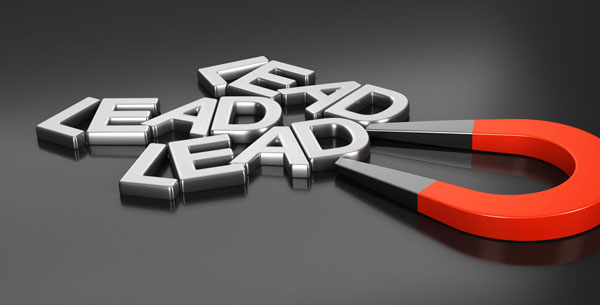
I think that you can do a mix of both, but I do say focus on the evergreen content first because it’s the gift that keeps on giving and YouTube is that search engine, so you should be making content that’s going to continue to perform for you and build your business for years to come. That’s where I focus 90% of my energy and then I’ll still do some stuff that’s more trending topic-wise because they can give you a viral boost of success. The cool thing is, for example when I made the video on Periscope, it was a trending topic at the time and I was the first person to make a video on how to use it on YouTube. I did technically topic jack, but it also was continuously a video that people were looking up for the next year to two years because they were trying to figure out how to use the platform. If you can do it in that way where it’s something that’s directly relevant to your business and you know that it will have these evergreen results as well, but it’s a trending topic at the time, that’s awesome. It’s the same with things like the Instagram algorithm. That’s always a trending topic, but it’s going to bring in that long-term success for you as well.
Are there particular hashtags or tags that you found to be super powerful? Maybe not traffic jacking or topic jacking but more like solid tags or hashtags that perform and maybe differentiate the two for our readers? Hashtags is a newer thing and tags have been around forever and we don’t actually even see those unless we use a special tool. Can you deconstruct all that?
Tags are a very vital part of optimizing your videos and hashtags are new. Tags are basically taking the keywords that you want to rank your video for. They could be several different relevant keywords. Let’s say you want to rank for how to get more views on YouTube. It could be how to get more views on YouTube in 2019, how to get more views, getting YouTube views. Those are all tags that you can add in there. You want to add as many relevant tags as possible too. Keyword stuffing will get you in a lot of trouble so you don’t want to post the same keyword over and over again. You want to do differentiated versions of all the places that your video could potentially rank. Hashtags are a way to basically categorize. It’s a very similar system to how you use them on Instagram. It’s a way to categorize your content. For example, I posted a video on the book that changed my life and that’s more of a mindset video, so we use the hashtag mindset. I also always hashtag my name because that will help categorize my videos and keep me in suggested if people are following one of my videos, they’ll end up following another one right afterwards.
I’m curious, what is the book that changed your life the most?
It’s called the Fire Starter Sessions by Danielle LaPorte. I read it a few years ago when right before this iteration of my business started. It’s all about setting goals with soul and it did change my life in so many ways and I got to sit down with the author and chat with her. I was speaking at the same conference as her, so it was a cool full circle moment. We did a full behind the scenes of what that was all like.
Speaking of behind the scenes, what is the secret behind doing a behind the scenes well because if you do it well, that gives the viewers an inside view and builds rapport and relatedness and loyalty with them and also people seem to love these behind the scenes-type videos. Tell us a bit more about that.
Truthfully, I look at it as more of a hub content, community content as opposed to growth content. I think that’s the way to look at YouTube. If you create content and topic that’s searchable, it’s going to help you grow forever and ever because you’re constantly bringing in traffic and views and subscribers from it. If you create more behind the scenes content, it’s more hub content in the sense that it’s deepening the relationship with your audience and giving them more of the behind the scenes look into who you are as a person and building that trust factor, which I think is so important. I think doing a blend of both is good but when you’re first starting, I recommend doubling down on hub content and searchable content because it’s the only way to see that momentum fast.
The growth content is the most important, especially in the early days. Then you can start building out that community content, which you also refer to as hub content that is building a relationship with the community that you’ve already created. Have you heard of the concept of 1,000 True Fans? It’s from Kevin Kelly. He wrote this a definitive piece about it and how it takes a small number of rabid fans or followers, what Neil Strauss refers to as your street team, to build that initial groundswell. When I started my other podcast, Get Yourself Optimized, it was originally called The Optimize Geek and I started that years ago. I started that podcast because I wanted to create a community of 1,000 True Fans for when my self-help book came out, which I’m still working on. I used all those interviews as fodder for the book and hopefully, the book will come out. I’m still figuring out what the title is going to be. I was thinking The Optimized Geek originally, but I don’t want to limit it to geeks. I’m getting off on a little tangent here, but back to this idea of 1,000 True Fans, that is the cornerstone or the foundation for your groundswell. Are you familiar with this concept?
Yeah. I talk about it all the time. I love that article. I mention it a lot because a lot of people who come to me are saying, “I want to grow faster. I want to get 100,000 subscribers. I want a million viewers. I want brand deals. I want sponsorships. I want to make $1 million in revenue and all this stuff.” I’m like, “Where are you at right now? What are your analytics right now? Who are you investing your time in right now?” I think in a world of vanity metrics, we forget that numbers are actually people. I still have people on my channel who started with me when I was making terrible videos way back and had been there since day one. Those are the people that are what I call my ride or die. I talk to them on a regular basis. I have so many people that I speak to in my community on a regular basis, almost daily. I’ve never even met them in real life but they feel like family. I think when you treat people as more than just numbers, you will have a lot longer term success.
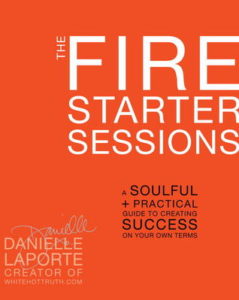
How do you build relationships with these 1,000 True Fans? I remember hearing Rachel Hollis at Traffic & Conversion Summit talk about how she built up this fan base of this community of thousands of people over a long period of time, well over a decade. That was so valuable to her, not just in terms of having people that were supportive of her and wanted to see her succeed, but also that gave her fodder for her books. She answered the top ten, twenty questions in Girl, Wash Your Face, which was I think the number two bestseller in the world based on that community. If she didn’t have that community, that more than 1,000 True Fans that gave her the most frequently asked questions, she wouldn’t have a book.
That’s the thing. It’s going back to basics. I think everyone over complicates community building and relationships. Relationships are everything. It sounds so cheesy and it said so much, but without going deep with your audience, you can’t go wide. I would rather have 10,000 or 100 or even ten people or one person that actually cares about me, my content, is invested in their own growth and we can build a real relationship than having a million people follow me who don’t give a crap. That’s not a way to build anything that’s sustainable or anything that’s real. It all comes back to playing the long game and I talk about this lot and it made a video on my channel with my dad who was my original mentor and he’s in professional sports and has worked in professional sports since I was a little girl. He went from being an athlete to now being the president of a Major League soccer club. He has been doing this for 40 years. He’s been in sports for 40 years.
I’m like, “My generation is like, “If it’s not working in three months, it’s not going to work.” That’s not how you play the game.” There are going to be ups and downs. There are going to be winning seasons, there are going to be losing seasons. You’re going to go through it all. If you don’t have the staying power to get through it, then you don’t deserve it in my opinion. The other thing to understand is that when you have a community around you, I’ve said this in the past, but your tribe is your trust fund. When you have a community that’s invested in you and follows you and cares about you, they will be there through the ups and downs. They will be there through whatever changes you need to make to find your groove and find your rhythm and find the thing that’s going to work for you and your business.
I’ve seen that firsthand that’s why I know that community everything. Oftentimes people are like, “How do you scale community? It’s so much faster to do paid advertising and mass growth.” You scale community by going super deep with a few people who then tell their friends and they’re like, “This chick, you’ve got to follow her. She’s the best. She changed my life. She changed my business.” That one person turns into ten people, those ten people then turn to 100 people. Those 100 people will then turn into a million. That’s exactly what Rachel Hollis was talking about and why she’s been so successful. I have mad respect for her because she did scale intimacy and scale that community.
The secret isn’t a whole lot of shallow connections. It’s going deep with the smaller number that you can actually handle and give them enough attention that you do change their life. If you’re responding to comments, if you’re doing YouTube Lives and you’re engaging with those people that are on the channel listening to you, watching you at that moment, affecting them, making a difference for them, that’s where the rubber meets the road.
I think it’s understanding that there will be a tipping point at some point.
When you treat people as more than just numbers, you will have a lot longer term success. Share on XYou have to keep the faith. It’s not a three-month thing, it’s the long game. Perseverance is key. If you get nothing else out of this, persevere. You have to keep the faith. Let’s talk about YouTube Live and the pluses and minuses of going live versus a pre-prepared video that is polished and all finely tuned and optimized.
YouTube Live’s an amazing thing because it allows you to go super deep with your audience and allows you to talk in real time with them. I think it’s a great tool. There are definitely some kinks and some things that need to be worked out, especially when it comes to commenting. It’s like the Wild Wild West. I do think it’s an amazing tool because you can go live about a topic and follow the same process, do your research, figure out what your audience wants to know. Instead of having to make a pre-produced video, which takes time and effort, you can go live on the topic and that topic can still rank. After you go live on YouTube, those videos can still rank for you in search and suggested and bring in that evergreen traffic. I have a live stream that I did a couple of years ago on how to grow your Instagram following and it’s still on page one, so it’s bringing in views and subscribers and leads for me all day every day for my business.
Another thing that you get as an all-source side benefit with YouTube Live is as you are live, you get a boost in the YouTube search results.
It’s an amazing way to boost your credibility and momentum in the algorithm itself within YouTube too, because they want people to live. They want retention, they want people to be on the platform as long as possible and going live is a great way to do that.
A lot of people are talking about Facebook Live, but not so many people talking about YouTube Live. What are the differences? Do you want to maybe even do both at the same time?

I think the difference is that Facebook is that immediate success. It’s like that immediate flash in the pan and that’s great. It gives you virality. It gives you attention right away. Whereas YouTube, I think I look at it the same way that I do use Facebook video versus YouTube video. Facebook video, you’re going to get immediate attention, but no one goes onto Facebook to be like, “How to get more views on YouTube?” I’ll keep using that example. They don’t search that in the search bar, but on YouTube they do. You’re going to continue to get results and success from your content on YouTube, whether it’s live or pre-produced. Whereas Facebook, it’s going to be an immediate success, then it will die off.
What do you do when you get comments that are negative or taking pot shots at you or vicious or violent?
I use the block button liberally. I have gotten to a point where I’m like, “I’m not for everyone.” It’s been a long journey to get to a place where I can accept that. To be totally honest with you, I’ve had a good run of positivity and I think that comes from the top. I think that the more that you lead with positivity, it also lets your audience know that you see them and they’re accountable for what they say. I will comment back to what people say. It keeps the trolls hiding because trolls live under a bridge for a reason. They don’t want to be seen. They don’t want to have to take accountability. I think for me, it’s a level of accountability. It’s leading with positivity and also understanding and this has been my lesson of this year, things have grown very fast for me and my business especially in the last year. My audience has grown quite fast. There’s a tipping point of you have to release control and you have to understand that there are going to be people who don’t like you and you are not for them. Everything you do annoys them and everything you say or what you look like annoys them. At the end of the day, bye. You’re not for me.
I want my 1,000 true fans. I want my people who are super invested because I’m invested in you. If you’re with me on this journey, I am with you. If you’re not, get out of my face. I don’t care to have you in my space and I don’t need you at all. It’s understanding that it’s going to rub people the wrong way no matter what you say or do. You could be the most lovely, amazing human in the world and there are still haters because there are miserable humans out there who are dealing with their own human experience of trauma. Unfortunately, they haven’t come to a place where they’re mature enough and so they’re going to continue to spew it on other people until they figured that out.
A spiritual perspective on this is if you focus on the light rather than on the darkness, you’re going to attract more light and you’re going to reveal more light into the world. Another way to look at it is if you’re not focused on looking good and looking bad, if you’re focused on adding as much value in the world as possible and changing people’s lives, all this periphery and all the noise and the trolls and the so forth fade into the background. One other thought about this, I learned this one from Robert Allen, bestselling author of so many books, many on real estate. He talks about the difference between frowny faces and smiley faces in your audience. If you’re speaking on stage or you’re on a virtual platform, whether it’s a webinar or a YouTube Live or whatever, if you’re getting some frowny faces in the audience, that’s to be expected but you’re not there for them and they’re not there for you. Talk to the smiley faces, focus on them and add value for them because that’s who you’re there to serve. That’s been helpful for me to remember that too.
Relationships are everything. Without going deep with your audience, you can't really go wide. Share on XI think we all have an inner people pleaser. I definitely do. It takes a long time to navigate your way out of that, but you can’t please everyone. It’s humanly impossible. It’s understanding that if people don’t want to be there and if people aren’t happy to see you and happy to hear from you, it’s a free world. You don’t have to follow me, you don’t have to subscribe to me. I find it so funny that there are people who subscribe to spew negativity. I think that Brené Brown quote is the best possible way to look at it. I often come back to it. I need to post it up in my office because it’s something that I quote all the time. It talks about the fact that there’s a lot of cheap seats in the arena and they’re filled with people who are never going to venture onto the floor. They’re going to hurl mean-spirited criticisms and put down from a safe distance. At the same time, if you’re not in the arena getting your butt kicked with me, I can’t care about you and what you have to say. It’s important to take things to heart if they’re actually going to make a difference. If they’re coming from the cheap seats with people who have never had any skin in the game, brush it off basically because it’s not worth your time or energy.
That can be hard to do for some folks, I included. We all have egos and they can get bruised. Even seeing the like to dislike ratio and you see so many dislikes on a video and you’re like, “What did I do wrong?” It’s not about you, it’s about them usually.
You have to think about that. I actually have never once in my life disliked anything online, truthfully. I’ve never hit the dislike button. I’ve never done an angry face. I’ve never done anything that’s other than support. For me, I know that’s because I’m busy and I’m doing my own things and I have a big mission that I want to fulfill. I don’t have time to sit there and scroll online and like things and leave negative comments. Whenever I see that I’m like, “That’s sad. You must live a sad life.”
Even the algorithm doesn’t care because if you get a large number of dislikes but you’ve got massive watch time and you have lots of likes as well, you’re getting the engagement and that’s what YouTube wants to see is that people are sucked into your channel and your videos and you create polarity and polarize the audience. That’s okay. People in the world who are not afraid to take a stand do that. There’s another concept that I don’t see that often anymore, but it was popular years ago and that was posting video replies to other people’s videos. Do you see that much anymore?
No, I haven’t seen that in a long time. I feel like that was even a thing when I was first getting started. It’s not a trend on YouTube anymore. It still is in the entertainment space and the blog space, but it’s done in a little bit of a different way. It’s not something I see a lot of anywhere.
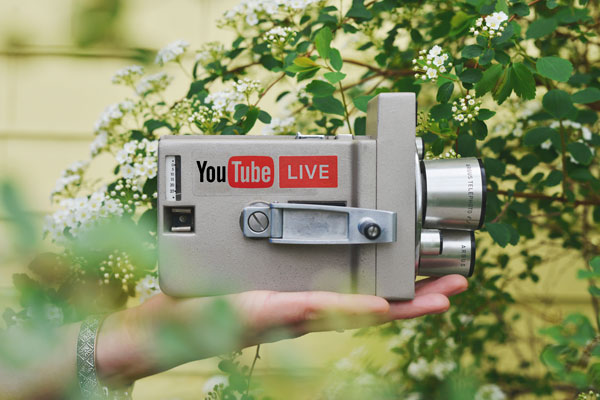
You mentioned that you had some old videos that you thought were terrible. I’m sure you’re your own worst critic on that. I’m sure they were fine but do you ever go back and delete old videos and you think, “What was I thinking when I said that? What was I wearing?” Do you just leave them there for posterity?
I leave them there because they’re a part of the journey and I think it’s important for people to understand that we all start somewhere. Anything you want to do well, you’re going to be bad at the beginning and bad is obviously subjective. It depends on what you deem to be bad. Even when I look back on my old videos, I’m like, “They could be better,” but at the same time I have such a fond memory of that experience and such a fond memory of that person. It’s showing me the evolution in my own growth and that’s a cool thing to be able to see. I think that’s one of the beautiful things about video and about YouTube is that it’s this diary that you’re constantly able to go and look back on and be like, “I have changed so much.” I do think it’s a practice in self-awareness because when you see yourself on video, you do see yourself and you have to not judge. That’s the hardest thing in the world.
I work with so many people who are like, “I hate the way I sound. I hate the way I look.” It’s because you’re not used to it. I’ve been on TV or doing videos since I was fifteen because I started in acting and then I went into journalism and then I started doing YouTube. YouTube, even for me, without a director, without a producer, without an entire team lighting me and telling me exactly what I need to do when, it was terrifying because you felt like you’re stripped naked basically. You’re doing it all on your own. I had to get over a lot of my perfectionist tendencies, I had to get over a lot of, “I don’t look and sound perfect, but that’s okay.” It’s been the best thing I’ve ever done because it’s allowed me to see myself for who I am and grow as a person at a fast rate.
Be kind and grateful to your younger you because you didn’t know what you know now. You made mistakes, but it made you who you are now.
I would not be who I am now without that younger version of me.
We all start somewhere. Anything you want to do well, you're going to be bad at in the beginning. Share on XWhat was it at fifteen years old that got you started in this journey?
I actually started making videos when I was young. As soon as I’ve figured out what a camcorder was, I was like, “I’m going to start making videos,” and I would do little skits with my friends. I always made videos for special occasions for my family, for anniversaries, for my parents, for ex-boyfriends, for friend’s birthdays. I would make videos because I love the process of it. I truly thought that everyone in the world did the same thing. Actually, that book I referenced earlier, there’s a quote in it that says, “Whatever comes most naturally to you is your genius,” or whatever people give you the most gratitude for is your genius. It was this light bulb moment of, “I make videos all the time. I wonder if I could make this a career.” I started on TV when I was fifteen. I love acting. I love performing. I started doing commercials here and there and acting and theater. I wanted to be a broadcaster. I knew that when I was young. I want to interview people. I want to educate, inform and inspire people for a living. I thought I wanted to be the [6:00] news anchor.
I went to broadcasting school, worked in radio, then worked in TV, I reported at the Olympics. Logically, it was an amazing experience but in my heart, I was like, “This is not for me,” because I’m still working for somebody and working for someone who’s telling me how to say things, where to be, what to do. It doesn’t feel like freedom for me. It doesn’t feel like the job that I envisioned. I immediately left that experience. At the 2010 Olympics, I finished my job there and then I drove home and I was like, “I’m going to start my own business.” That’s when I started an online magazine. I started using social media to build it because I didn’t have the funds to actually pay for advertising or anything else. I did that, learned a lot. From there, I started consulting with businesses on doing the same thing and working on their social media strategies. I did that for five years, mastered it and loved it. I was good at it, had a lot of success with my clients and worked with clients from all different factors. From there, one day out of pure desperation, I needed to answer client questions and I sat down and filmed a YouTube video and that’s when everything changed.
I’m assuming that the TV background gave you a lot of insight into how to do YouTube well and working with directors and producers and lighting, camera crews and all that.
It did and it didn’t. It actually hurt me more than it helped me to be honest, because I was so fixated on everything looking like it looks on TV that it held me back from taking action for a lot longer than I would’ve liked because I was so nervous about not looking perfect. I also think, when you go into broadcasting school and you learn to become a journalist, you learn that you have to speak certain ways and there are so many rules you have to remember, this code of ethics and all this stuff. All of that was constantly in my head. I almost had to break that habit of speaking like a broadcaster and start speaking like myself and come into myself. In some ways, from a video production standpoint, I get the basics of what I need to do here. I get hooking people and all that to get them into the videos. Outside of that, I feel that a lot of it I had to un-learn and re-learn.

What does camera-ready mean for you? It means something very different for somebody who does TV versus a YouTuber.
For me, camera-ready means feeling my best. For me, it depends on what platform I’m using. If I’m on Instagram stories, I’m generally on Instagram stories with zero makeup on and fresh out of the gym, not looking my ultimate best but feeling good. When it comes to YouTube, because I know those videos are going to be around for a very long time and continue to push traffic, I do my hair and I’ll do my makeup and I’ll wear something that I feel confident in. For me, camera-ready means you feel prepped, you feel prepared to talk about the subject that you want to talk about. It doesn’t matter what you look like as long as the content and the value is there.
What length of videos would you recommend and frequency? Let’s say there’s one YouTuber who’s new, who’s starting with doing a lot of one-minute videos because they’re so easy and bite-size snacks for their fans and followers and they repost that stuff to other social platforms as well. There’s the other strategy of trying to produce something that goes deep and it’s not as frequent maybe 30, 40, 60 minutes even of content and a lot of value bombs but not very frequently. What would you recommend to somebody who’s starting out?
I think a minimum one day a week is a good place to start and then scale from there. It’s about quality over quantity on YouTube, but you want each video to work like a machine for you. You want to be doing all four phases with each video in order for it to actually generate results for the long run. One video week, the length of the video is totally dependent on the niche and the subject that people are talking about. For me, what I say is to write your scripts for our attention. We have something we call the HOT Script Formula, which is the template that all of our clients use in writing their scripts to make sure that people are watching from start to finish because if they’re not, YouTube will look at it as a bad video and won’t rank it.
The length is arbitrary because I have videos that are fifteen minutes long, but they’re sequential steps that the viewer needs to get through in order to get the outcome they’re looking for. They’ll watch the whole thing, so the retention still high. As long as you’re getting to the point and talking about what you need to talk about in order for the viewer to get what they’re looking for, you’re good. You don’t need fluff. You don’t need filler. You don’t need to explain why someone needs to watch the video. They already know that that’s why they’re clicking on your video. Just get into the meat of the video as quickly as possible.
The HOT Script Formula, you taught this at your Traffic and Conversion Summit session, which was awesome. Can you give us a quick explanation of what that is?
It’s Hook, Outcome, and Testimonial. Basically, you want to hook the viewer first and they give them the exact outcome they’re going to get by watching the video and then provide a testimonial why you’re credible. You give them sequential steps and then it’s a conversion call to action. Say something like, “Now I’ve taught you how to get more views on YouTube, but if you want to do this right, you have to understand SEO, so I created an SEO checklist below this video. Go there to download it.” The last call to action is your engagement call to actions, “If you liked this video, hit the like button below. Share with your friends, be sure to subscribe,” because that gives you YouTube signals to say, “This video is good. We should rank it super high or we should push down suggested,” which is going to bring in that long-term traffic.
Start your video with, “This is Stephan Spencer, co-author of The Art of SEO,” and then saying, “In this video, we’re going to,” You just killed it. You destroyed it by not jumping right into the hook immediately because that’s what they care about, not about hearing how amazing you are.
I always say no one cares about you on YouTube until you make them care. No one cares about your bio or even what your name is, to be honest, until they get value from you consistently. At this point, I would say now I have an audience. We have over 250,000 subscribers on my channel. When I was first starting, no one knew who I was and no one cared. I led with value all the time because I was like, “I’m going to give people what they’re looking for,” and I’ll slowly start to nurture that relationship. Getting into the hook of it right away is important. Think about your own search habits. When you land on a video and someone talks for five minutes, you click off because you’re like, “You’re not answering me fast enough. I’m going to go somewhere else.”
If folks wanted to work with you, if they wanted to learn from, you mentioned that you have your YouTube for Bosses online training program. You have your Authority Accelerator coaching program to work directly with you. What are some ways to engage with you and learn from you and where should we send folks who want to do that?
The best place to go is SunnyLenarduzzi.com and you’ll find a tab there called Work With Me. It’s got all of our offerings on that tab. We have two programs. You either can do self-study for our crash course, which is YouTube for Bosses, which we have supported over 3,000 people in building their presence. We have the Authority Accelerator, which is a 90-day program where you work directly with myself and with my team of Sunny-certified coaches. My coaches are incredible. I often say they’re smarter than I am and they have more experience than I do when it comes to YouTube. They’re amazing. Their bios and the results they’ve got are incredible. They are inside of that program with us and we do coaching calls. We have daily access to support and more intimate guidance to get you more accelerated, faster results.
Thank you so much, Sunny. This was fun and fast-paced and awesome. Thank you for sharing your wisdom. I hope that the audience take some action, apply some of the stuff that you’ve learned and work with Sunny because she is awesome. We’ll catch you next time.
Important Links:
- Sunny Lenarduzzi
- YouTube channel – Sunny Lenarduzzi
- YouTube for Bosses
- Authority Accelerator
- Work With Me
- HOT Script Formula
- Get Yourself Optimized
- Fire Starter Sessions
- Girl, Wash Your Face
- The Art of SEO
- Tommie Powers – Previous episode
- Robert Allen – Previous episode
- Rachel Hollis
- Danielle LaPorte
- Kevin Kelly
- Neil Strauss
- Brené Brown
- Entrepreneur.com
Your Checklist of Actions to Take
☑ Have a YouTube strategy and use YouTube to build my business by putting out great content that has value to entertain, inspire, and educate people.
☑ Apply Sunny’s VIRAL technique which stands for using Valuable Intel to create solid content that is Relevant to my target audience as well as Authoritative to show that I’m an expert in my niche, and then Leverage it for my business.
☑ Send people to my website, an email list, or to my Facebook group where I can further capture them and further the relationship with them.
☑ Leverage my pre-existing audience to get that extra push in the first 24 hours, knowing that YouTube looks at those signals to continue pushing it outside of the first 24 hours because of the engagement it gets.
☑ Recreate content in my old videos or create content with a very similar keyword because anytime I make a video on the same topic, it’s going to add more momentum for me within the algorithm.
☑ Get found and build momentum by applying Sunny’s formula which is high search volume, low competition, and then the gap in views and velocity.
☑ Write down a list of all the things that I’ve mastered that I could teach with authority and figure out if my clients and customers are currently asking my questions about those topics, and then to start making videos around those.
☑ Focus on the evergreen content first and make content that’s going to continue to perform for me and build my business for years to come.
☑ Engage with my audience through YouTube Live which allows me to go super deep with my audience and talk with them in real time.
☑ Check out Sunny’s online training programs by going to SunnyLenarduzzi.com and clicking on the tab Work With Me tab to access YouTube for Bosses and Authority Accelerator.
About Sunny Lenarduzzi
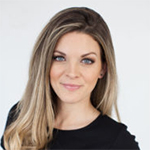 Touted as a “marketing master” by Entrepreneur.com, Sunny Lenarduzzi, has almost a decade of experience in creating thriving brand strategies using social media and video marketing. From developing a YouTube series for Hootsuite that increased subscriptions by 75% to hitting 1 billion impressions in 1 day on a live-streaming campaign with Applebees, Lenarduzzi knows how to create content that works for your business. From working with corporations to supporting thousands of entrepreneurs with her signature training program YouTube for Bosses, it is Sunny’s passion to create success ripples by empowering others to share their message and create impact on a bigger scale using the power of online video. Sunny’s own YouTube channel has amassed an audience of over 200,000, Forbes named her one of the 20 must-watch channels that will change your business, Entrepreneur named her as one of the top 10 channels every entrepreneur should follow and she’s spoken internationally from NATO’s Headquarters in Brussels to Creative Live in San Francisco.
Touted as a “marketing master” by Entrepreneur.com, Sunny Lenarduzzi, has almost a decade of experience in creating thriving brand strategies using social media and video marketing. From developing a YouTube series for Hootsuite that increased subscriptions by 75% to hitting 1 billion impressions in 1 day on a live-streaming campaign with Applebees, Lenarduzzi knows how to create content that works for your business. From working with corporations to supporting thousands of entrepreneurs with her signature training program YouTube for Bosses, it is Sunny’s passion to create success ripples by empowering others to share their message and create impact on a bigger scale using the power of online video. Sunny’s own YouTube channel has amassed an audience of over 200,000, Forbes named her one of the 20 must-watch channels that will change your business, Entrepreneur named her as one of the top 10 channels every entrepreneur should follow and she’s spoken internationally from NATO’s Headquarters in Brussels to Creative Live in San Francisco.


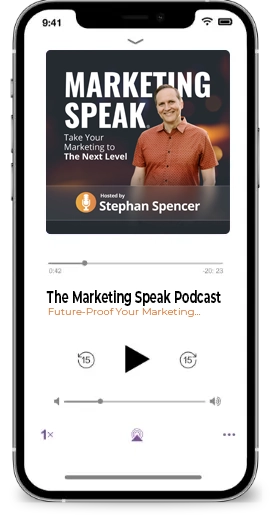





Leave a Reply